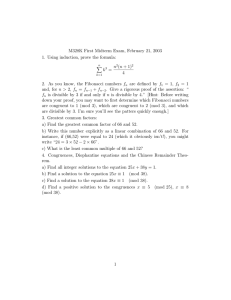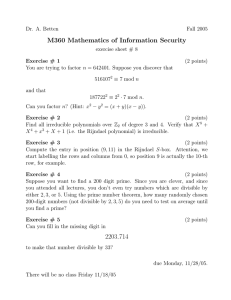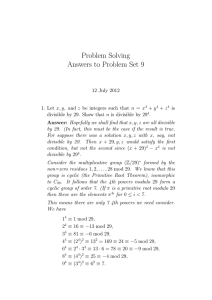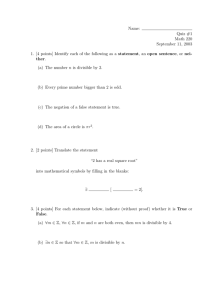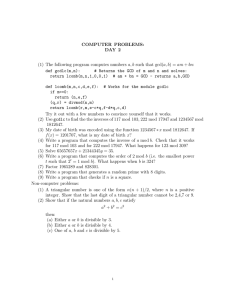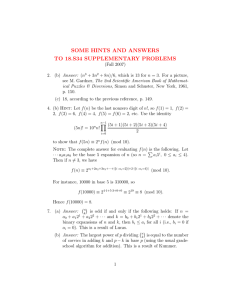MATH 4400 SAMPLE EXAM 1) Find all solutions of x 2)
advertisement
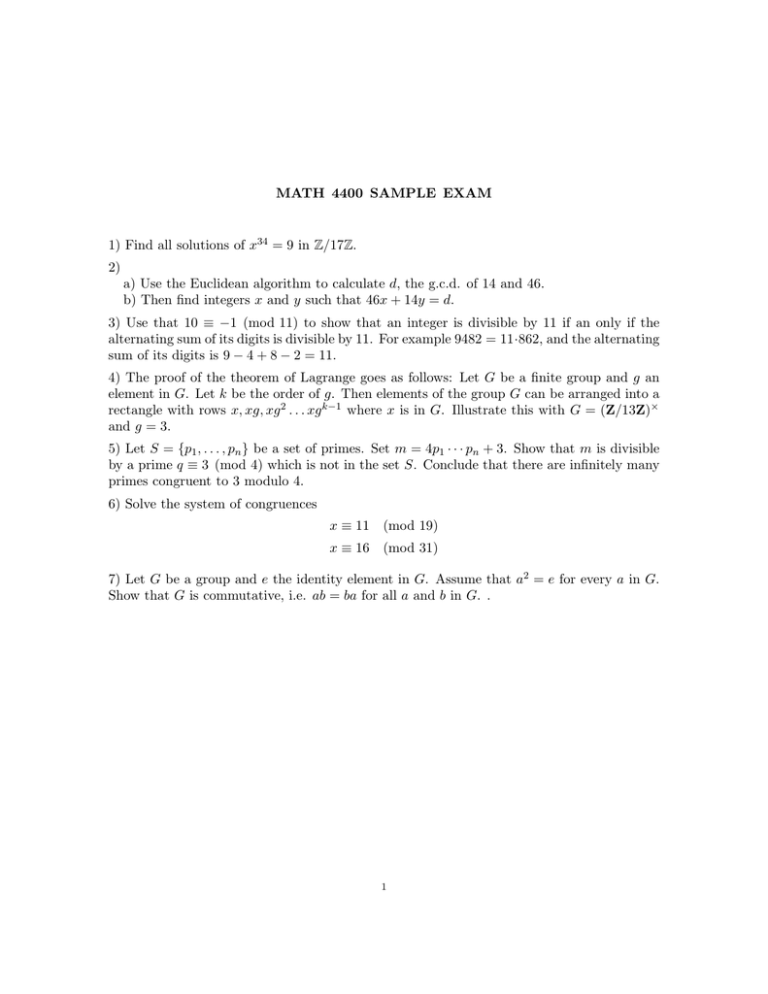
MATH 4400 SAMPLE EXAM
1) Find all solutions of x34 = 9 in Z/17Z.
2)
a) Use the Euclidean algorithm to calculate d, the g.c.d. of 14 and 46.
b) Then find integers x and y such that 46x + 14y = d.
3) Use that 10 ≡ −1 (mod 11) to show that an integer is divisible by 11 if an only if the
alternating sum of its digits is divisible by 11. For example 9482 = 11·862, and the alternating
sum of its digits is 9 − 4 + 8 − 2 = 11.
4) The proof of the theorem of Lagrange goes as follows: Let G be a finite group and g an
element in G. Let k be the order of g. Then elements of the group G can be arranged into a
rectangle with rows x, xg, xg 2 . . . xg k−1 where x is in G. Illustrate this with G = (Z/13Z)×
and g = 3.
5) Let S = {p1 , . . . , pn } be a set of primes. Set m = 4p1 · · · pn + 3. Show that m is divisible
by a prime q ≡ 3 (mod 4) which is not in the set S. Conclude that there are infinitely many
primes congruent to 3 modulo 4.
6) Solve the system of congruences
x ≡ 11
(mod 19)
x ≡ 16
(mod 31)
7) Let G be a group and e the identity element in G. Assume that a2 = e for every a in G.
Show that G is commutative, i.e. ab = ba for all a and b in G. .
1

